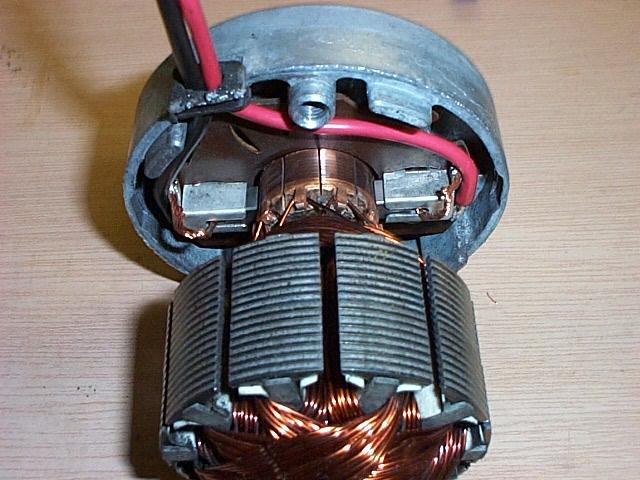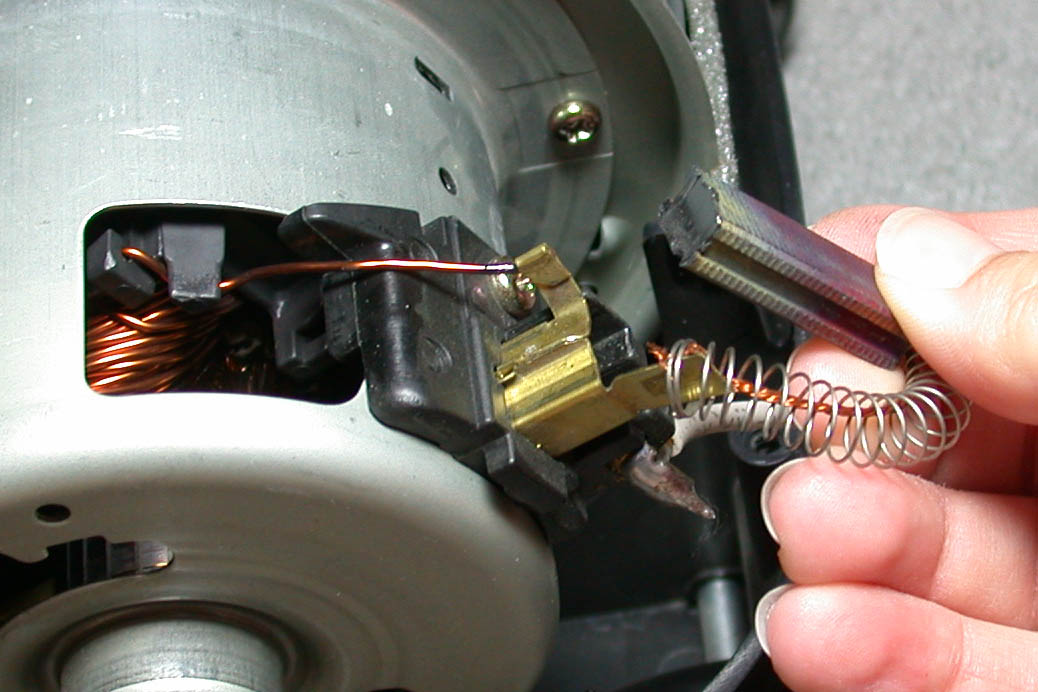Motor Brushes
Now that's how the electric motor works in principle. As stated above, the flow of current in the electromagnet part of the motor needs to reverse every 180 degrees, or twice per rotation. Further, the current needs to reverse when the rotor's in a certain orientation. To know when to flip the current, the electronics need to have a way of detecting the rotor's orientation. The easiest way to do this is with a brush.In a brushed motor, there's a piece of the rotor that sticks out and brushes against part of the shaft when it passes by that part (see Wikipedia's diagrams). When the brush hits the part of the shaft as it rotates around, the shaft detects this motion and flips the current. It's this hitting of the brush against the shaft that causes brushed motors to require periodic maintenance.Can someone please explain to me the difference between brushed vs brushless electric motors? Not the inherent differences in performance, but rather the differences in construction and mechanism of action.







No comments:
Post a Comment